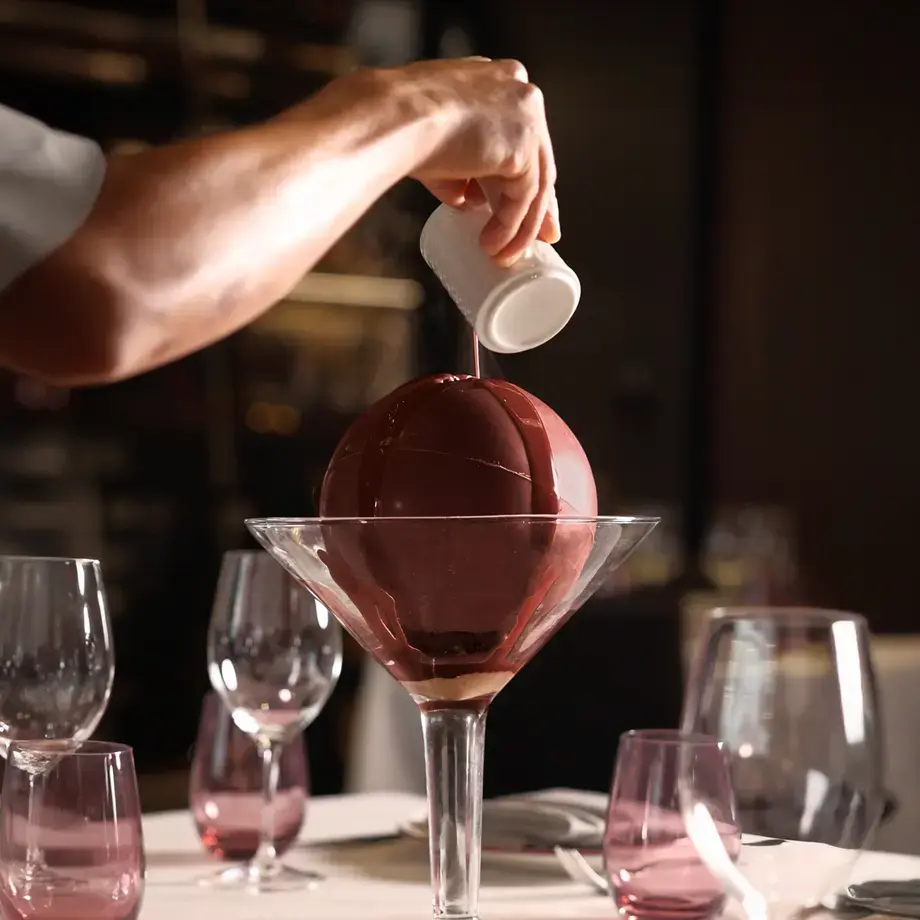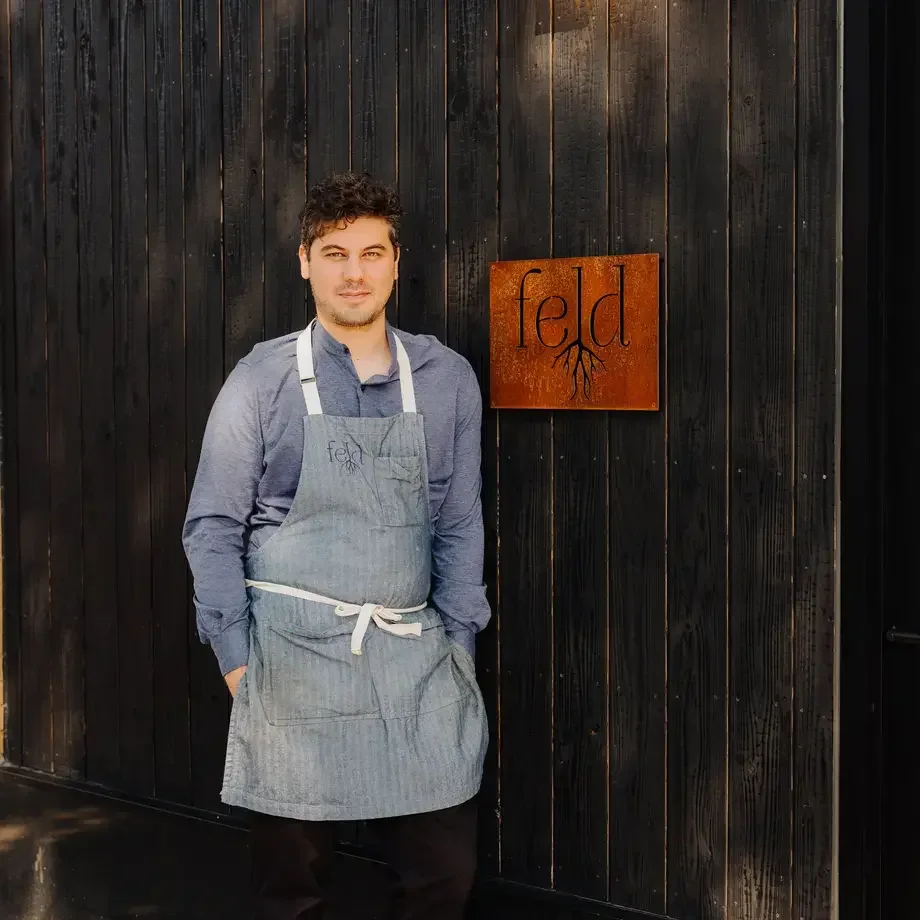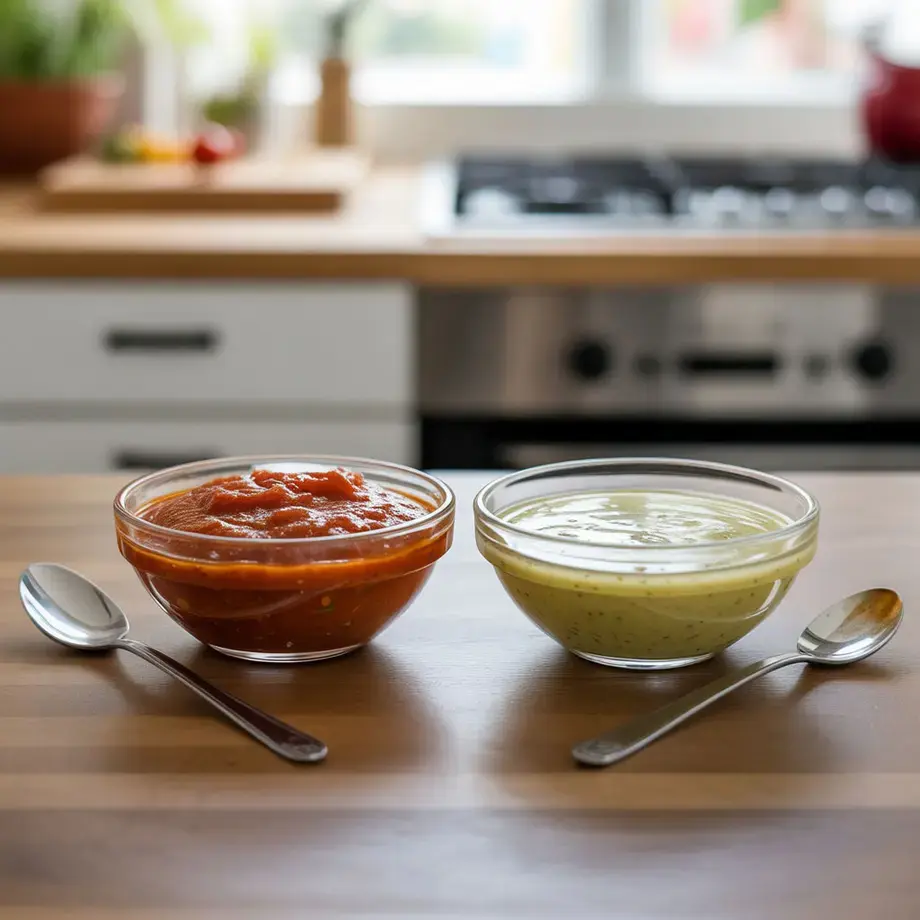High-Quality Produce
“There are a lot of things to consider when starting out in the fermentation process, but the quality of your produce is key,” explains McSharry.
Whether it’s cabbage, cucumbers, carrots, or radishes, he recommends starting with seasonal fruits or vegetables that have a firm texture and good crunch. These hold up well during fermentation and yield a satisfying bite.
Shapes & Sizes
“How you cut your produce dictates how it will look on the plate with your finished dish, so be mindful before you start chopping,” says McSharry.
From cubes and rounds to sticks or thin julienne strips, the shape you choose affects not only presentation but also how flavors develop and how quickly the vegetables ferment. Smaller pieces ferment faster and become softer, while larger chunks stay firmer because the brine takes longer to reach the center.
Flavors & Seasoning
Deciding what flavors you want to achieve will help determine whether you pickle or ferment. At Grá, fermentation takes center stage, but some dishes—like the signature Pickled Cucumber Salad—call for an external acid like vinegar for sharper, quicker results.
Fermentation, by contrast, transforms a food’s natural sugars into acid using a salty brine. The salt not only preserves the vegetables but encourages beneficial bacteria to thrive, creating complex flavors over time.
“The goal here is to connect your finished product to the other ingredients featured in your dish,” explains McSharry. Think dried herbs, spices, aromatics, or even fresh fruits for layering unique flavors into your brine.
Infusing
Knowing when to add different ingredients to your brine can make all the difference in achieving vibrant flavors. Hard spices and seeds—like star anise, coriander seeds, or peppercorns—should be briefly simmered in the brine to extract their aromatic oils.
Softer ingredients, such as herbs and delicate aromatics, are best added once the brine has cooled slightly. This helps preserve their bright, fresh flavors and prevents them from becoming bitter.
Timing
“Remember that the longer you ferment, the more complex the output,” McSharry continues.
Depending on what you’re fermenting—and how deep you want the flavors to become—the process can take anywhere from a few days to several weeks. Faster ferments like sliced cucumbers or radishes might be ready in just 3–5 days, while heartier vegetables like cabbage for kimchi or sauerkraut often need one to three weeks to fully develop their tangy, complex notes.
Zero-Waste Mentality
Once your fermentation is complete, don’t toss out the leftover brine or vegetable scraps. That flavorful liquid can become the base for vinaigrettes, salad dressings, marinades, or even creative cocktails. Chopped remnants of fermented vegetables can be blended into sauces, mixed into grain bowls, or used to add brightness to savory dishes.
Embracing a zero-waste mindset not only maximizes the return on your efforts but also turns your kitchen into a playground for experimenting with new flavors.















